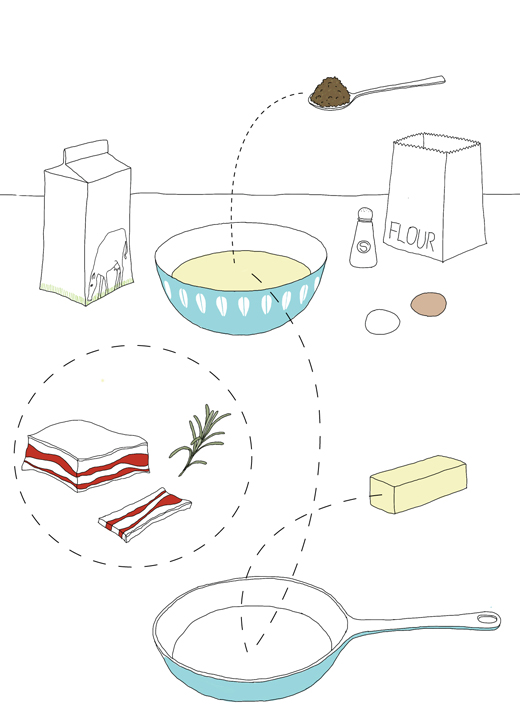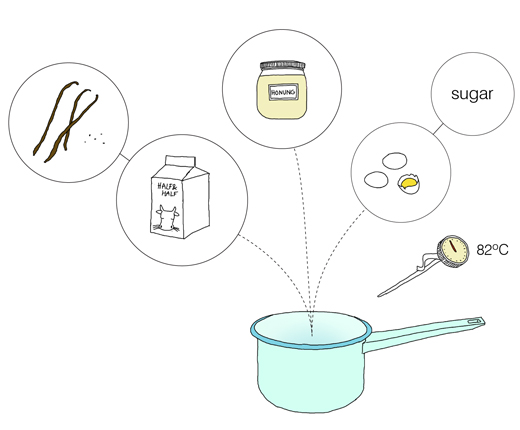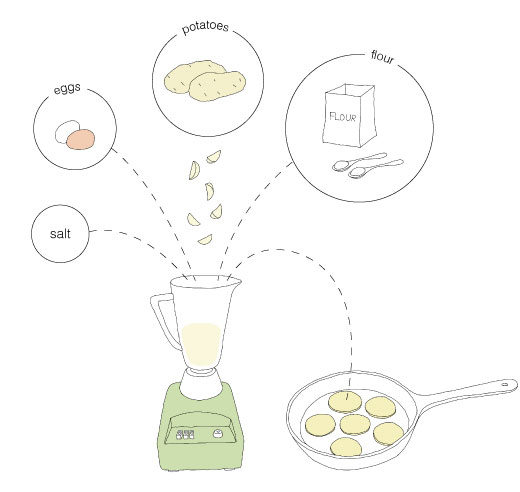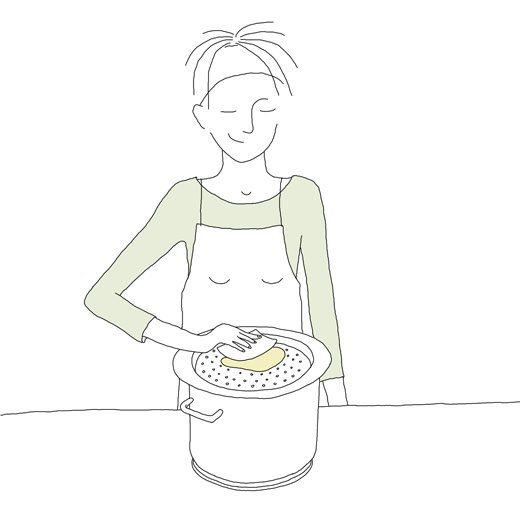
Årsta fältet, a flat field in a suburb of Stockholm, may not be the most exotic place to visit in the capital city of Sweden. But somewhere in that field I had one of my most peculiar food memories ever. It was there I ate spätzle (or maybe it was Hungarian nokedli) for the first time in my life. The spätzle was served with a rich goulash that we made in a hanging cast-iron pot over an open fire. This is that kind of moment that is hard to recreate.
The goulash was amazing but it was the spätzle that won my heart. Since then I’ve been treated to spätzle again and again and I love it as much every single time. However not many cooks have been able to share their recipe as they cook it by instinct without any instructions. Fair enough, I just had to start figuring out my own way.
I started by playing around with different recipes I found online. The result was often not that great which probably had more to do with the choice of flour than the recipe. I discovered that, for example, pastry flour (why use that in the first place?) made the batter taste really floury in an unpleasant way. I also tried adding fresh grated potatoes but then it became halušky (potato noodles). At some point I gave up and started to use just regular wheat flour. The result made me very happy and pleased!
Recently I followed Steen Hanssen’s recommendation to use dinkelmehl (spelt flour). The spätzle became darker and had a slight nutty taste. I liked it.
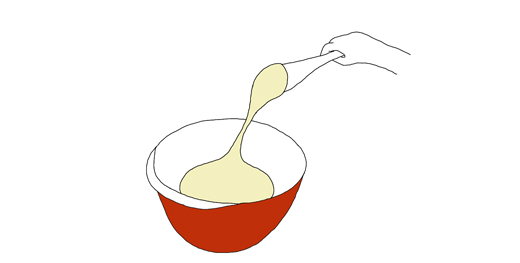
for the batter
(2-3 people)
3 eggs (depending on size)
¼ cup of lukewarm water
about 1¼ cups of spelt flour or regular flour
pinch of salt
some freshly grated nutmeg
a couple of tablespoons of butter
Heat up some water until its just lukewarm. Mix together eggs, water, nutmeg and a pinch of salt. Gradually start adding flour, little by little. Make sure to avoid creating lumps. The dough has got enough flour when its a little stretchy and easily falls off you spatula without breaking. If you get the dough too stiff, just add some more water. Let the dough rest for about half an hour.
There are many different ways to “form” the spätzle and its probably very individual which method you may prefer. I have tried some techniques with more or less success. I think using a spätzle lid is the easiest and my kitchen doesn’t ends up in a mess (see image above).
Heat up some salted water in a large pot that will fit the spätzle lid nicely (see below for other methods). Bring the water to a boil. Lower the heat. Place the lid on top of the pot and add ¼ of the dough on top. Start to press the dough down with a spatula (often comes w/ the lid). Stir around the spätzle a little so they don’t stick together. The spätzle are done after about 2-3 minutes when they float up to the surface. Use a skimming ladle to fish them up. Repeat above steps until the dough is finished. Adjust the heat if necessary. Add some melted butter to the spätzle so they don’t stick together.
Serve the spätzle with a rich goulash, creamy mushrooms or baked in the oven topped with cheese.
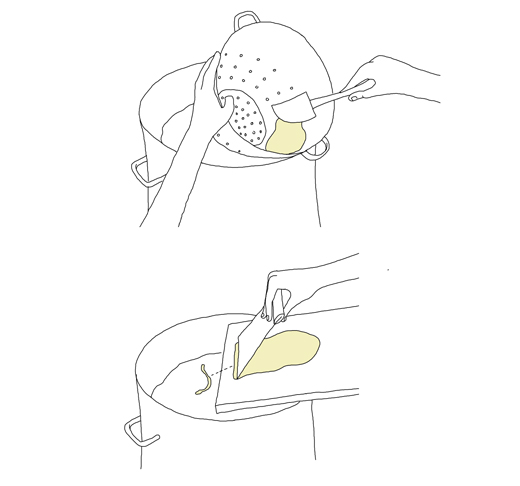
Other methods (and there are more)
Another technique is to use a pasta strainer, preferably those with larger wholes. My stainless steel strainer worked fine, even if it was a little clumsy, the spätzle came out pretty nice, tiny and delicate! Just let the strainer rest at an angle on the edge of the pot (see image above) and use a soft spatula to press down the batter through the holes into the hot water.
If you want larger spätzle you can use a smaller chopping board and a chef knife or a bench scraper. Place one batch of dough on the chopping board and let it rest at an angle at the edge of the pot. Start to cut small pieces of the dough right into the boiling water. It worked okay and probably would be better with practice.
Recipe and drawings was originally published at EcoSalon, on 11 March 2012

